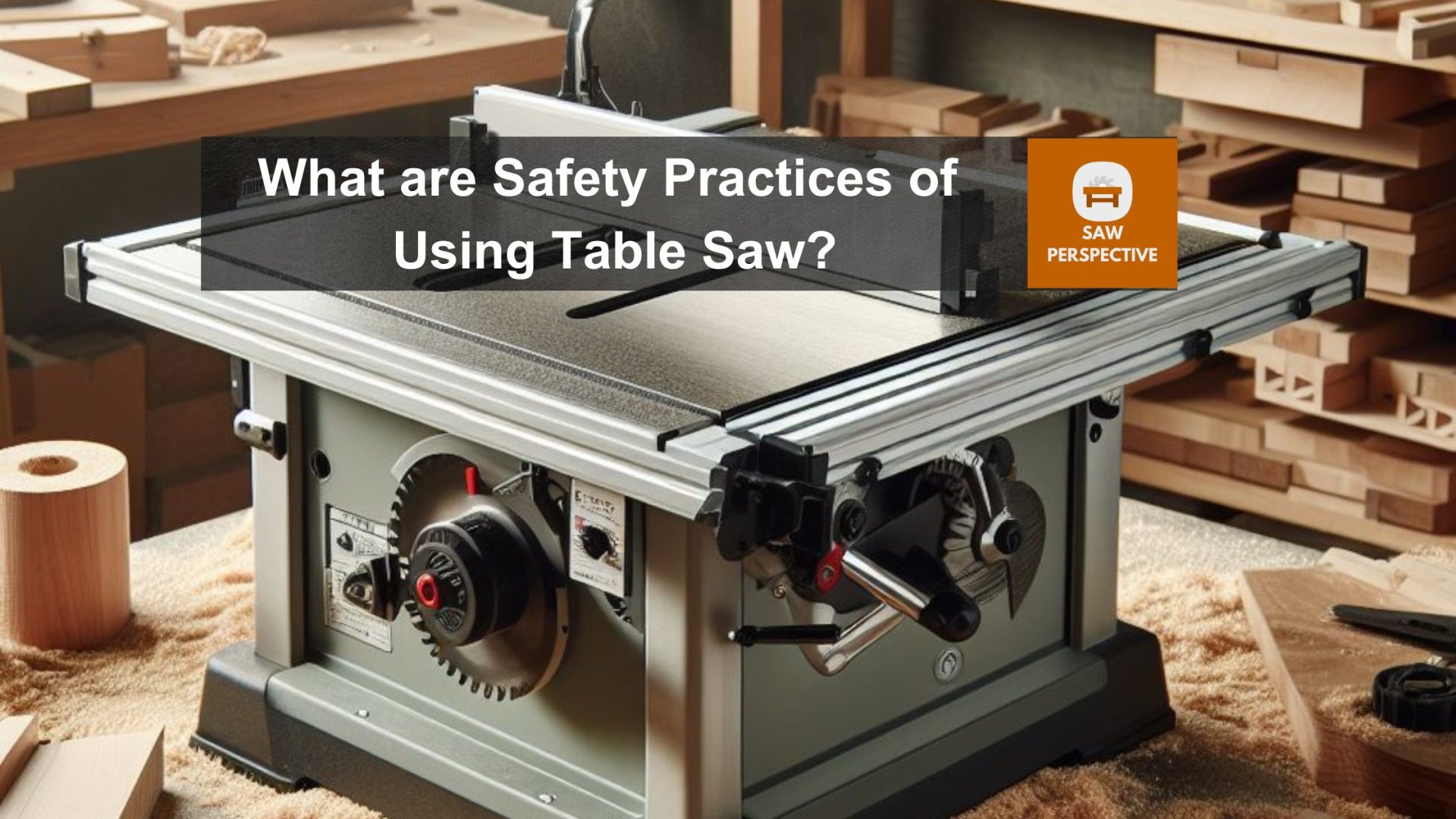Get training before using a table saw for the first time. This will help you learn this. Always wear safety glasses or a face shield. This will protect your eyes from flying debris and sawdust.
Keep the workplace well-lit and clutter-free. Make sure to maintain the saw with a sharp blade and working safety features. Before use, disconnect the power to avoid accidental starting.
Use push sticks to keep hands a safe distance from the blade. Use other tools to do the same. Remember this, especially when handling small pieces.
Never reach over the saw blade and use a rip fence to cut. It is important to understand emergency shut-off procedures. Always follow the manufacturer’s guidelines for safe operation. This will reduce the risk of injuries.
Which are essential safety gear for table saw operation?
- Eye protection: Safety glasses or goggles protect the eyes from debris, preventing injuries.
- Either earplugs or earmuffs can provide ear protection. These tools protect the ears from the loud noise of the saw. They keep one’s hearing safe.
- Wearing a dust mask/respirator is important. It prevents inhaling dust particles and protects respiratory health.
- When working, it is important to wear proper clothing. Wearing snug-fitting clothes prevents tangling and safeguards against sawdust. By doing so, you can ensure a safe and comfortable work experience.
What are table saw safety features?
- Blade Guards: These shields surround the blade, reducing accidental contact with rotating teeth.
- The saw has anti-kickback claws to prevent material from kicking back. This reduces the risk of accidents by protecting the operator.
- Riving knives are thin, vertical blades located behind the saw blade. They help protect the material from pinching or binding. This promotes smooth and safe cutting operations.
How to set up a safe workspace?
Ensure adequate lighting to prevent eye strain and fatigue. This reduces the risk of accidents. To create a healthy work environment, keep the area well-ventilated.
This will remove dust and smoke. Ensure there is enough space around the table saw for safety. Woodworkers can move freely and avoid accidents with this feature.
How to do safe material handling?
To support long or heavy objects, use proper lifting techniques. Hold objects close to your body, keep your back straight, and bend at the knees. For longer materials, consider team lifting or using mechanical assistance.
Maintain a secure grip on the material as you move it through the saw to reduce the risk of slippage or kickback. Address misalignments to prevent binding and potential accidents. Prioritize safety in your woodworking projects.
What are different safe-cutting techniques?
Maintain a steady pace: Avoid rushing the cut, as this can lead to mistakes and increase the risk of injury. Maintain a controlled, systematic approach to ensure accuracy and safety.
Use a feather board to secure and guide material for safety in woodworking. It prevents kickback and promotes safe cutting for increased safety. Prevents the workpiece from moving back or turning during cutting operations. This increases security and control.
What are emergency procedures using table saw?
Immediately press the red emergency stop button to stop all saw operations. This prevents further injury or damage. Be trained in basic first aid to address injuries. In case of a fire or emergency, stay alert for the nearest exit. Direct yourself and others to safety.
How to maintain table saw to use safely?
Table Saw Lubrication, and regular maintenance are important. Clean the saw, removing sawdust and debris that may affect its performance. Apply a thin layer of dry lubricant to certain parts.
These parts include blade guide rails, arbor bearings, and worm gears. Refer to the manufacturer’s manual for specific lubrication points and recommended lubricants. Regularly inspect the blades for signs of damage or cracks.
To ensure optimal performance and safety, replace the blade if it shows any signs of wear or damage. inspect the power cord for signs of wear or damage.
If necessary, replace the cord with one of the proper ratings. Make sure the saw is properly grounded to prevent electrical hazards.

